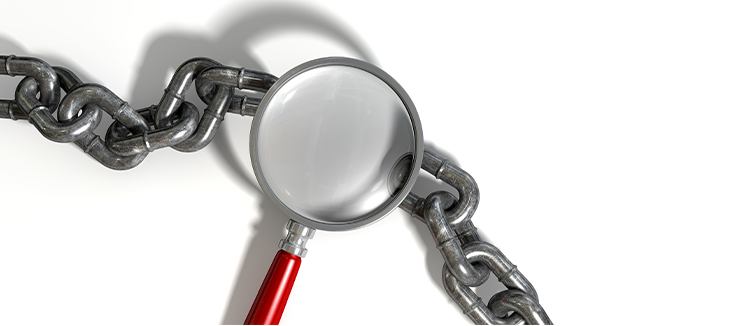Transesophageal echocardiography has become the standard of care for various cardiac related clinical applications and is used in the echo laboratory, outpatient settings, as well as the operating room. The clinical dependence on the proper operation of these probes is increasingly expanding due to both the clinic utility of TEE and significant technological advancements in transducer design.
Almost all manufacturers' operator's manuals say that electrical leakage testing should be done before every patient exam. If your healthcare facility is an Intersocietal Accreditation Commission (IAC) accredited institution you are required by the standard of care to conduct an electrical leakage test on all TEE probes prior to high-level disinfection. The IAC standard states, "The manufacturer's guidelines must be followed for the appropriate care and cleansing of the TEE transducer and adhere to the appropriate infectious disease standards to prevent the transmission of disease. Effective December 31, 2015, the structural and electrical integrity of the transducer must be checked between each use, using an ultrasound transducer leakage tester, "Passed" or "Failed" must be documented in the routine TEE probe cleaning/maintenance log along with action taken if failed."1 The CS Medical HLD TRACKER offers healthcare professional the ability to record this information as well as cleaning and high-level disinfection data in one central location for later review and audit compliance.
What is electrical leakage current and what is the potential hazard?
The TEE ultrasound machine, when in-use, is directly connecting 120 or 240VAC electrical source to the patient. If the TEE probe has a crack or break in the outer coating, bending rubber or distal tip it will result in an electric shock to the patient. This electrical shock has the potential of resulting in death. Electrical current flowing near the heart, even a very small amount, might result in the loss of heart rhythm, resulting in death. Large currents flowing through the extremities, while not fatal, can result in severe burns. To make sure electrical equipment is not hazardous, electrical leakage current testing is required.
The main reason for electrical leakage testing of the TEE probe is that it always involves patient contact. TEE, intra-cavity and intraoperative probes are especially important because they have a lower resistance connection to tissue and are often used in the proximity of the heart.
Electrical leakage testing can improve your ability to identify minor probe damage so as to obtain repair before the probe: leaks electricity in a dangerous amount, is damaged beyond repair, has reduced image quality or has corrosion of the internal components.
How does testing leakage current affect patient and user safety?
Leakage current is measured to ensure that direct contact with the medical equipment is highly unlikely to result in electrical shock. The test is designed to simulate a human body coming in contact with the insertion shaft of the TEE probe. The measured leakage current values are compared with acceptable limits. These limits are based on the TEE probe manufacturer's recommendation for acceptable levels. As a function of repeated use, a TEE probe can develop punctures or cracks somewhere along the insertion tube. These conditions could likely expose the patient's esophagus to chassis leakage current and cause the patient to be at the chassis ground potential. If this occurs, then the probe is no longer functioning as a class BF device and would fail a leakage current test. The patient would then be at ground potential and leakage currents from other devices within the patient's environment could travel through the patient, compromising the safety of both the patient and the operator.2
One leakage testing device User's Manual also states that…
"In addition to verifying that the ultrasound transducers are safe for patient use, the test makes it possible to reduce expensive repairs. Identifying transducers that exceed safe leakage currents early may allow for repairs to be made before a transducer becomes non-repairable."3
Although a TEE probe does not actually come into direct contact with the heart, it is only separated from the heart by a very thin membrane. As it takes very little current to excite the muscle of the heart and potentially cause ventricular fibrillation, an obvious life-threatening condition, it is vital that TEE probes are tested for electrical leakage testing prior to every use.
What are some manufacturer's recommendations for TEE testing?
- TEE probe manufacturer's recommendations for testing frequency are:
- GE: "It is strongly recommended that, before the probe is used again, conduct a current leakage test to ensure the electrical safety of the probe and the patient"4
- Philips: "If the outer layer of the shaft is punctured or cracked, a patient's esophagus could be exposed to chassis leakage current. Carefully feel the tip and shaft, and inspect the entire transducer. If you suspect an electrical problem, follow the electrical safety check procedure described… "5
- Siemens: "Perform a leakage current test on the transducer at the end of each transducer high-level disinfection procedure. Retest prior to use if the transducer has not been used for an extended period of time…"6
- Sonosite: "The electrical leakage current test should be performed on the TEE transducer after taking it out of the box and prior to each exam; alternatively, if the bite-hole inspection test is done prior to each exam, then electrical leakage current test should be done yearly at a minimum."7
- Toshiba: "The Toshiba transesophageal phased array transducer is designed taking every consideration to insure mechanical and electrical safety; however, cracks or holes may result in a hazardous situation. Therefore, a safety kit is supplied to detect cracks and holes not detectable visually or by touch for preventive countermeasures against such hazardous situations by measuring insulation resistance electrically. Use this kit for safety check before and after using the transducer."8
What is the solution for electrical leakage testing?
Electrical leakage testing is required by IAC and is necessary to ensure TEE probe and patient safety. Conducting electrical leakage testing can be accomplished with CS Medical's ULT-PC-31 electrical conductive probe within the TD 100® Automated TEE Probe Disinfector or TEEClean® Automated TEE Probe Cleaner Disinfector prior to high-level disinfection. CS Medical offers the BC Group ULT-2020 ultrasound leakage tester and respective adapters that are specific to each TEE probe manufacturer. Conducting the electrical leakage test, with the TD 100, is simple and requires less set up and supplies to complete prior to each high-level disinfectant when compared to other solutions.
References:
- https://www.intersocietal.org/echo/standards/IACAdultEchocardiographyStandards2016.pdf
- G.Wayne Moore, Acetara Acoustic Laboratories Longmont CO
- BC Group ULT 2000 User’s Manual
- GE Medical Systems TEE Probes User’s Manual
- Philips Medical Systems Transducer and System Care and Cleaning, Dec 2013
- Siemens/Acuson SC2000 User’s Manual
- Sonosite TEE User’s Manual
- Toshiba PET512-MC TEE Safety Kit User’s Manual


